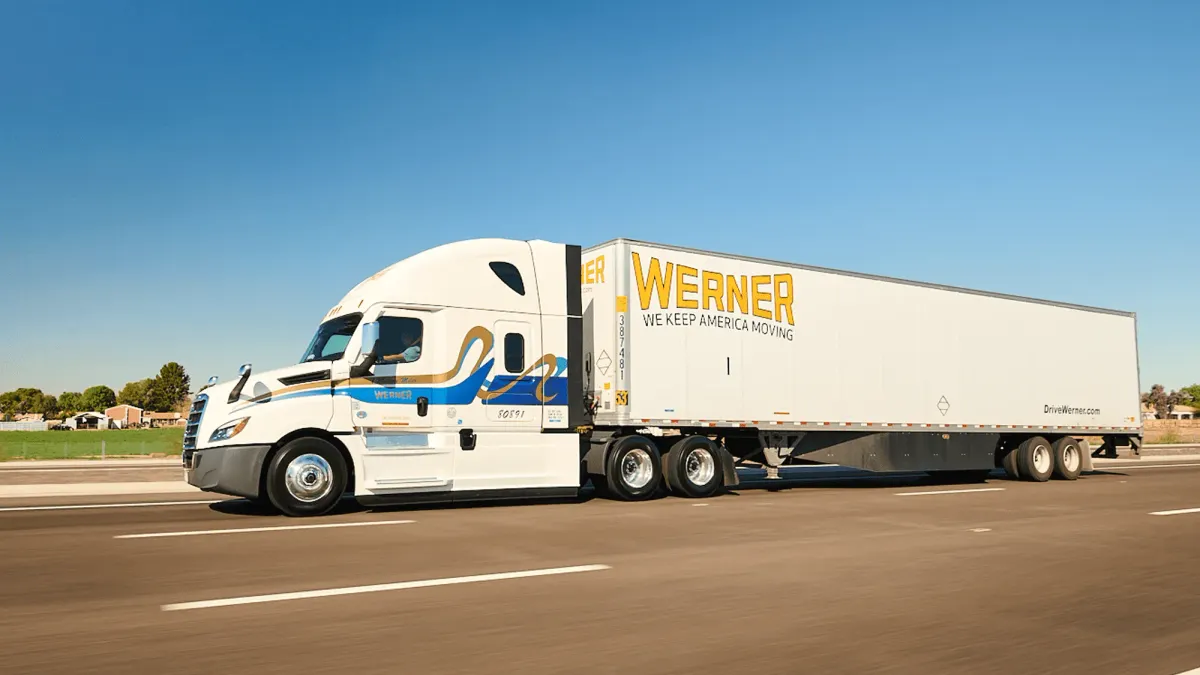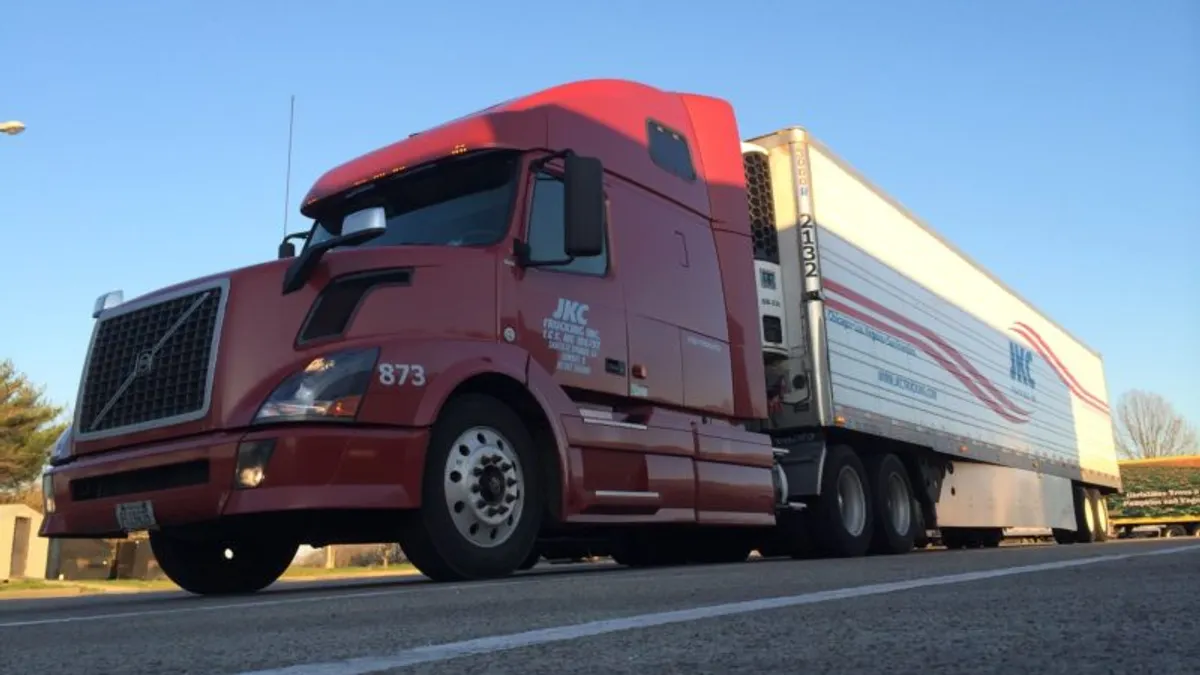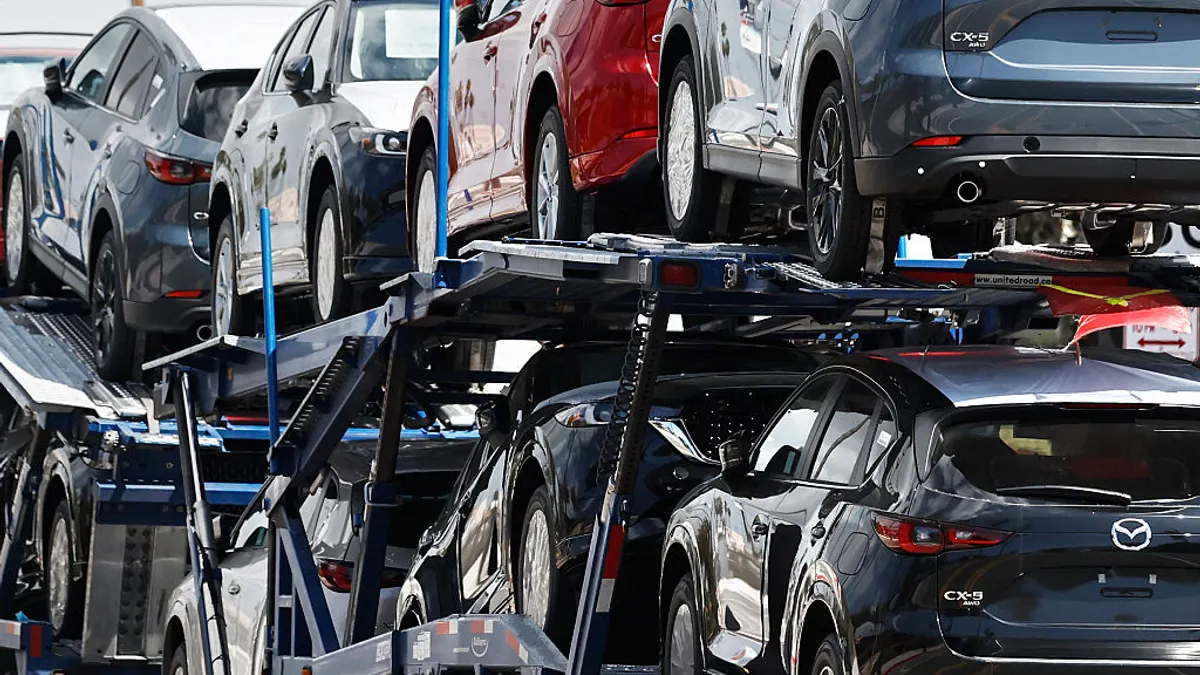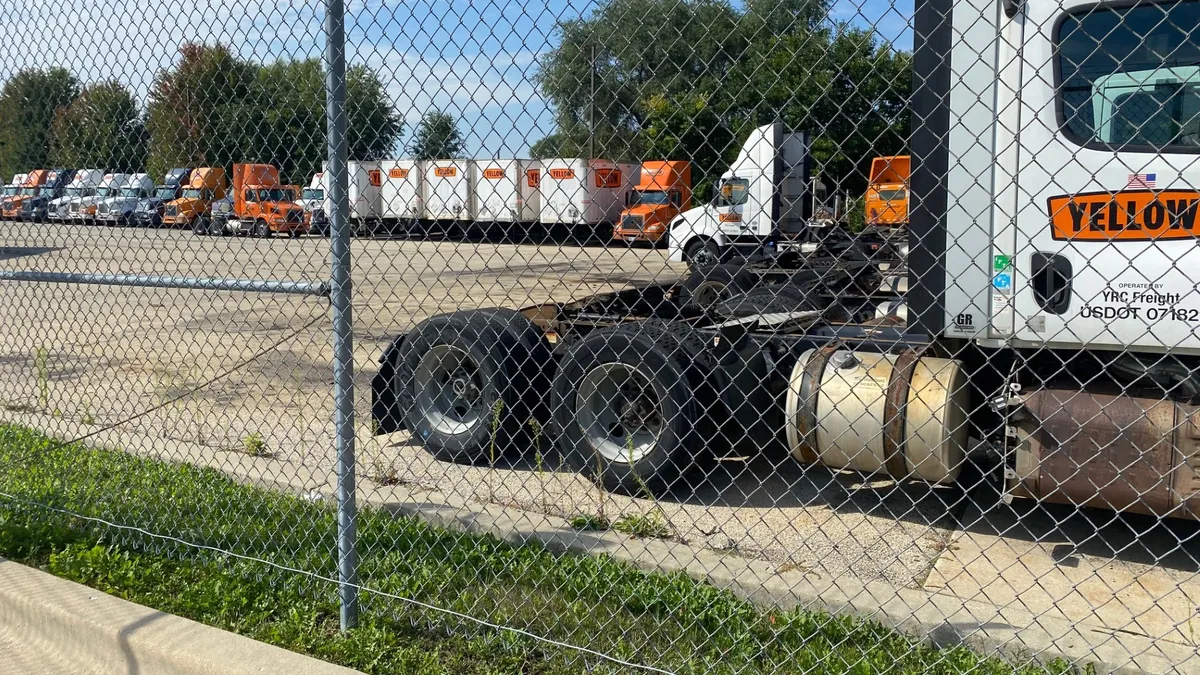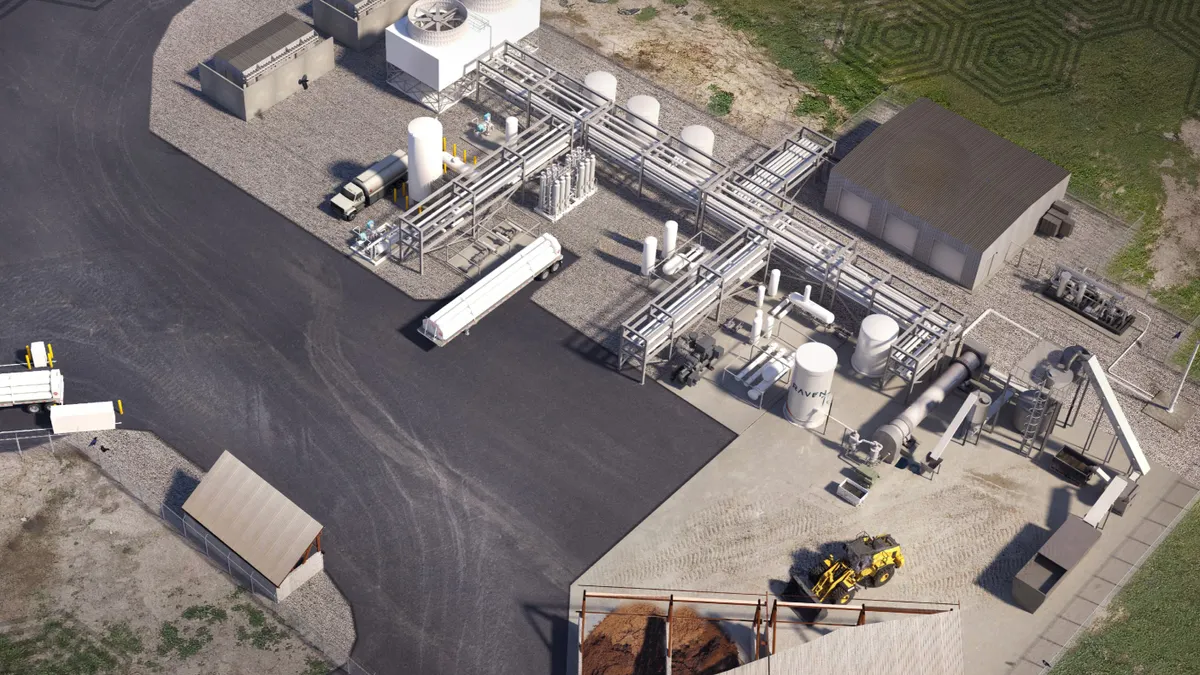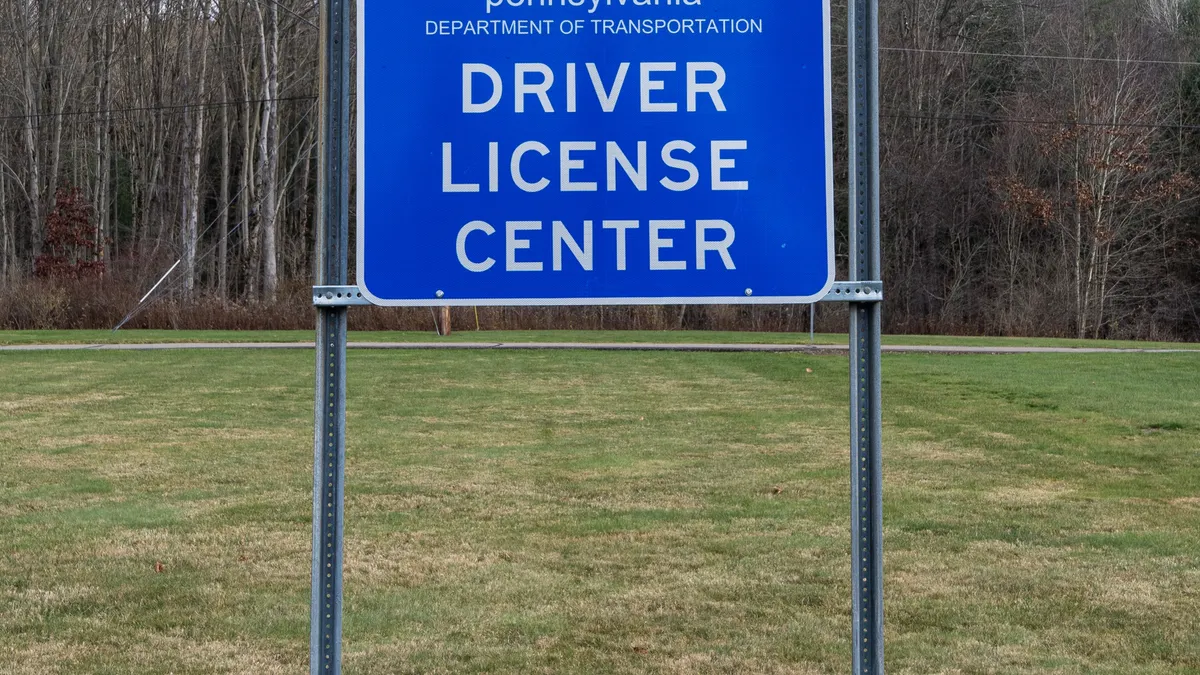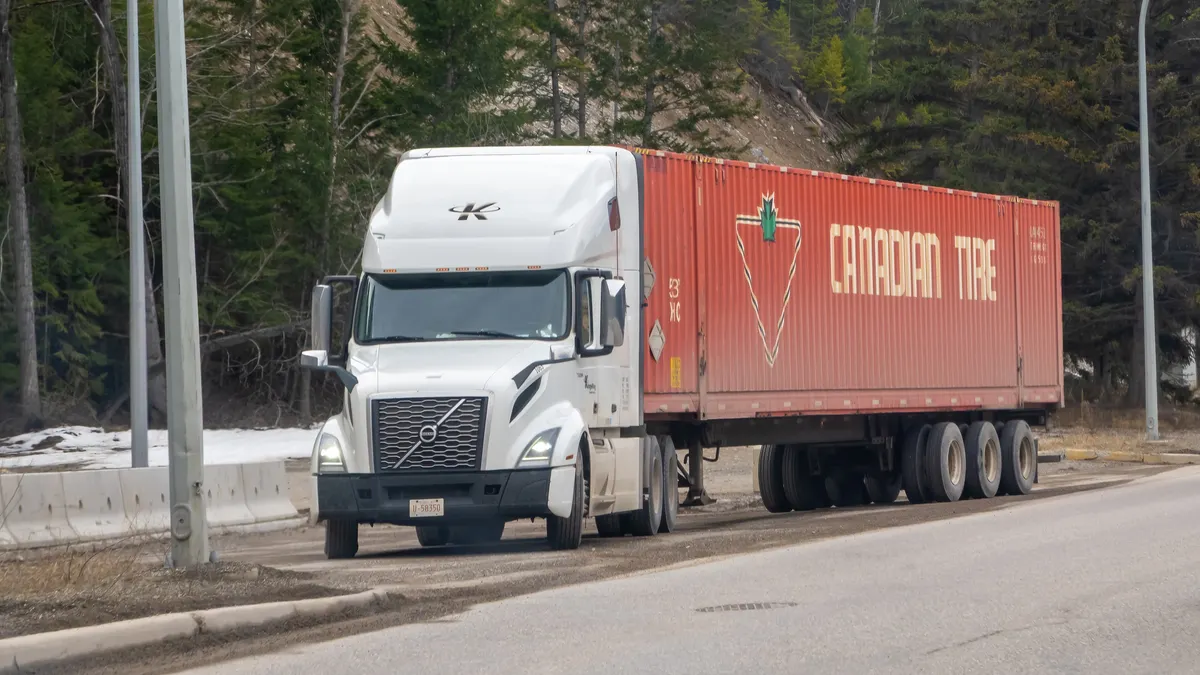2020 was supposed to be a better year for trucking than 2019, with some of the financial doldrums of 2019 left in the rear-view mirror.
The industry was hoping Congress would focus on a infrastructure bill to fix highways and bridges. Truck capacity fell in February, meaner higher rates for fleets. Fleets were hoping to make progress in 2020 against industry-specific problems such as the driver shortage.
The economy overall appeared solid, diesel fuel was cheap, e-commerce was growing and the Dow Jones industrial average had broached 29,000. Many economists did not foresee a recession in 2020, despite a slowdown in U.S. manufacturing.
Then it became clear in late February that the novel coronavirus and the resulting illness, COVID-19, were not petering out in Asia, but instead spreading throughout the world. What started as a remote health care issue had become more than just a logistics entanglement: It had forced some transportation companies to cancel business at ports, at terminals and at conferences.
The latest evidence came on March 3, when FTR, an Indiana-based research agency, reported preliminary North American Class 8 orders for February fell an unexpected 20% from January, to a total of 14,100 units. It was the lowest order activity for the month of February since 2010 and down 18% year over year, FTR reported.

"This is not good news for the trucking industry or the economy," said Don Ake, vice president of commercial vehicles for FTR, in a news release. "It appears fleets have decided to delay some orders until the health crisis has passed. There is no pressure for fleets to order more trucks since most carriers have enough capacity to handle current freight volumes."
There is still no clear consensus when COVID-19 will dissipate, bringing all or most Chinese factories back online and setting ships off for ports in Los Angeles and Long Beach, California. The virus and its impact have scared the markets so much, some analysts believe they cannot now make a forecast for the remainder of 2020.
"It has totally muddied the outlook for 2020," said Rajeev Dhawan, director of the Economic Forecasting Center at Georgia State University, speaking to Transport Dive. "Remember, the event is still going on, so you cannot do the economic impact if the event is not over."
Dhawan compared COVID-19 to a hurricane sitting offshore, certain to hit land. As long as the hurricane is parked on water, the hurricane does no damage, and therefore economic assessments of the damage cannot be compiled, he said.
To other observers, the viral hurricane is getting closer to land, or closer to dissipating. The damage, or lack thereof, will soon be known.
"I think we are on the cusp on knowing whether it is really going to affect us," said John Q. Anderson, operating partner of Greenbriar Equity Group, speaking to Transport Dive.
Greenbriar Equity has stakes in LaserShip, a non-asset-based parcel delivery company; BDP International, a logistics company managing shipments of chemical, industrial and consumer items; and SEKO Logistics, a global supply chain company.
"I was feeling bullish in terms of equaling or beating 2019."

John Q. Anderson
Greenbriar Equity Group
Anderson said if the spread of the novel coronavirus plateaus or stops soon, cumulative effects on corporate earnings will be muted. But if world governments shut down some ports, factories and airports, economic consequences arrive.
"Then you materially affect the transportation and logistics outlook for the year," said Anderson. "And I am talking by at least 5% to 10%, if not more, in terms of overall volumes, revenues, profits."
That's a big switch from Anderson's first and earlier take on 2020.
"I was feeling bullish in terms of equaling or beating 2019," said Anderson.
But no one knows for sure, even people at the center of trucking advocacy. Bob Costello, the chief economist for the American Trucking Associations, said he can tell people what will likely happen for the remainder of 2020 if he knows what will happen with the virus spread. Large-scale quarantines or a short-lived spread lead Costello to different conclusions — but conclusions, nonetheless.
"At this point, I don't know what is likely to happen," Costello told Transport Dive.
The virus is often the first issue freight analysts bring up.
"I am kind of caught up in the moment of coronavirus," said Randal Mullett, a former XPO official and now the principal of Virginia-based Mullett Strategies, speaking to Transport Dive. "Is this a short-term thing ... that affects consumer sentiment, supply chains and the demand curve? That is kind of an unknown thing. I am looking at it right now as an isolated event, although it is a serious event."
Mullett put forth an optimistic tone, though — if the virus spread slows or is stopped.
"I do believe we will recover from this in the next few months," Mullett told Transport Dive. "Now those few months may be hard for trucking. Transport stocks are taking it on the chin right now. There's no reason to believe it's going to be a real quick turnaround for them ... I am generally still bullish on things right now."
And one reason? Capacity has fallen, meaning there will be higher rates for fleets, Mullett said. Another analyst agrees that rates will go higher, even if the reasons for tightening capacity are not directly related to rising consumer demand.
2020 had kicked off with reduced truckload capacity, meaning shippers were beginning to have fewer options, said Chris Pickett, chief strategy officer of Coyote Logistics, a UPS subsidiary, in an email to Transport Dive. Spot rates, the weaker sibling of contract rates, began to rise.
Coyote Logistics issues regular forecasts for the truckload market.
The problems seen in 2019 — bankruptcies, closures, union strikes, lower rates, rising insurance costs, increasing regulatory pressures, and driver-wage inflation — had the Darwinian effect of clearing out weaker fleets. Trucking companies are now in a position to push spot rates up, Pickett said, but the range will depend on how the economy fares in 2020.
"If the economy weakens materially from here, whether COVID-19 induced or not, we get a lower peak and a return to (rate) deflation as early as the first half of 2021, but the inflationary leg of the cycle persists though 2020," said Pickett.
Issues such as the driver shortage and e-commerce were the hot topics for 2020, before the fog of COVID-19 arrived.
In July 2019, the ATA reported the industry needed 60,800 more drivers at the end of 2018, just to meet demand for freight shipment.
The ATA's driver shortage numbers for 2019 will not be available for several months, Costello told Transport Dive. But he said the 2019 problems that manufacturing and trucking faced had the effect of easing the shortage — less demand for trucking, less demand for drivers.
"It didn't get any worse because we figured it out," said Costello. "It didn't get any worse because the industry slowed down. The underlying reasons for the driver shortage did not improve."
The driver shortage is the number one industry concern, according to the American Transportation Research Institute, an ATA agency. In October, speaking at the ATA Management Conference & Exhibition in San Diego, Costello said the shortage could number as many as 105,000 drivers in 2023.
Driver shortage tops trucking industry issues three years in a row
| 2017 | 2018 | 2019 | |
|---|---|---|---|
| 1 | Driver shortage | Driver shortage | Driver shortage |
| 2 | ELD mandate | HOS | HOS |
| 3 | HOS | Driver retention | Driver compensation |
| 4 | Truck parking | ELD mandate | Detention/delay at customer facilities |
| 5 | Driver retention | Truck parking | Truck parking |
Source: American Transportation Research Institute
The ATA is still hoping President Donald Trump and Congress pass an increase in the federal fuel tax. The federal fuel tax is 18.4 cents per gallon of gasoline and 24.4 cents per gallon of diesel fuel. Those tax rates have not been raised since 1993, and the ATA, the American Automobile Association and the U.S. Chamber of Commerce said they believe an increase in the tax would help fix national infrastructure and better fund the Highway Trust Fund, most of which is funded by taxes on gasoline, diesel and heavy-duty tractor sales.
A fuel tax increase in an infrastructure bill will not happen in 2020, says a longtime tax lobbyist.
"The House has said no, the Senate has said no, this is not happening," said Grover Norquist, president of Americans for Tax Reform, a Washington, D.C.-based taxpayer advocacy group he founded in 1985.
Mass transit receives 28% of the Highway Trust Fund, a diversion Norquist wants ended to meet highway needs.
"Right in front of you are the resources you need to fix the roads," said Norquist. "Why would you put water in a bucket with a hole in it?"
A fuel tax increase in 2020 will not hurt the industry, Costello said. Potholes and other road problems damage trucks, so fleets would likely save money if infrastructure is repaired, he said.
"That is some of the best government spending you can get," said Costello. "It's very stimulative. It creates jobs. There are secondary effects when you build new infrastructure and you repair infrastructure."
But infrastructure funding could present a problem for trucking. Some federal officials are considering a trucking-specific tax increase — a "VMT," a tax on vehicle miles traveled.
New fuel taxes don't appeal to everyone in the industry. Mullett said he believes the higher fuel tax or a VMT could heap economic problems on trucking if passed in 2020.
"Either one of those put pressure on our industry," said Mullet. "Particularly if demand doesn't come back."





